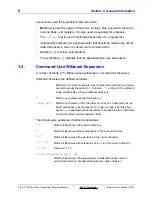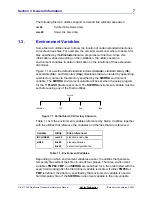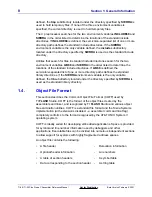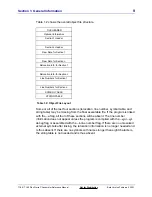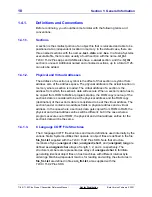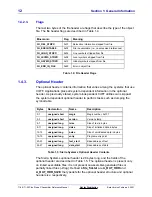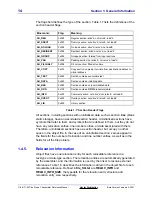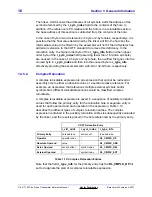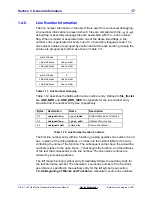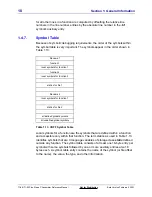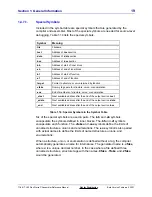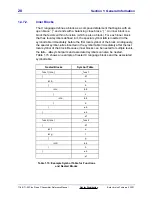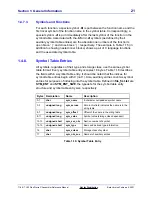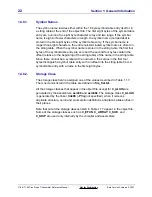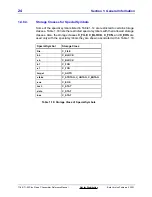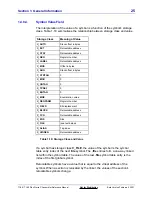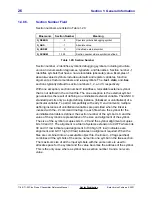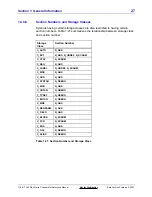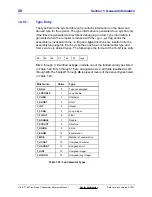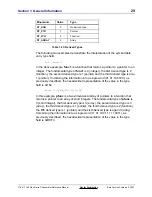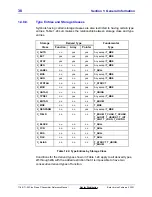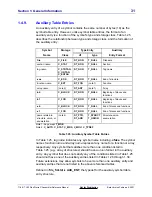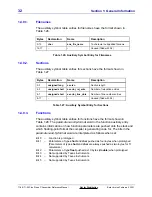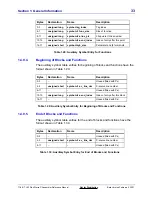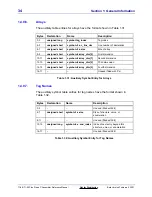
Section 1: General Information
19
TI
-
89 / TI
-
92 Plus Sierra C Assembler Reference Manual Not for Distribution
Beta Version February 2, 2001
1.4.7.1. Special
Symbols
Included in the symbol table are special symbols that are generated by the
compiler and assembler. Most of the special symbols are needed for source-level
debugging. Table 1.14 lists the special symbols.
Symbol Meaning
.file Filename
.text Address of .text section
.data Address of .data section
.bss Address of .bss section
.bb Address of start of inner block
.eb Address of end of inner block
.bf Address of start of function
.ef Address of end of function
.target Pointer to structure or union returned by function
.
xfake
Dummy tag name for structure, union, or enumeration
.eos End of members of structure, union, or enumeration
_etext Next available address after the end of the output section .text
_edata Next available address after the end of the output section .data
_end Next available address after the end of the output section .bss
Table 1.14: Special Symbols in the Symbol Table
Six of the special symbols are used in pairs. The .bb and .eb symbols
encapsulate the symbols defined in inner blocks. The .bf and .ef symbols
encapsulate each function. The .
xfake and .eos symbols define the limits of
unnamed structures, unions and enumerations. The .eos symbol is also paired
with actual names to define the limits of named structures, unions, and
enumerations.
When a structure, union, or enumeration is defined without a tag, the compiler
automatically generates a name for internal use. The generated name is .
xfake,
where
x is a unique decimal number. In the case where a file defined three
unnamed structures, structure tags with the names .0fake, .1fake, and .2fake
would be generated.


